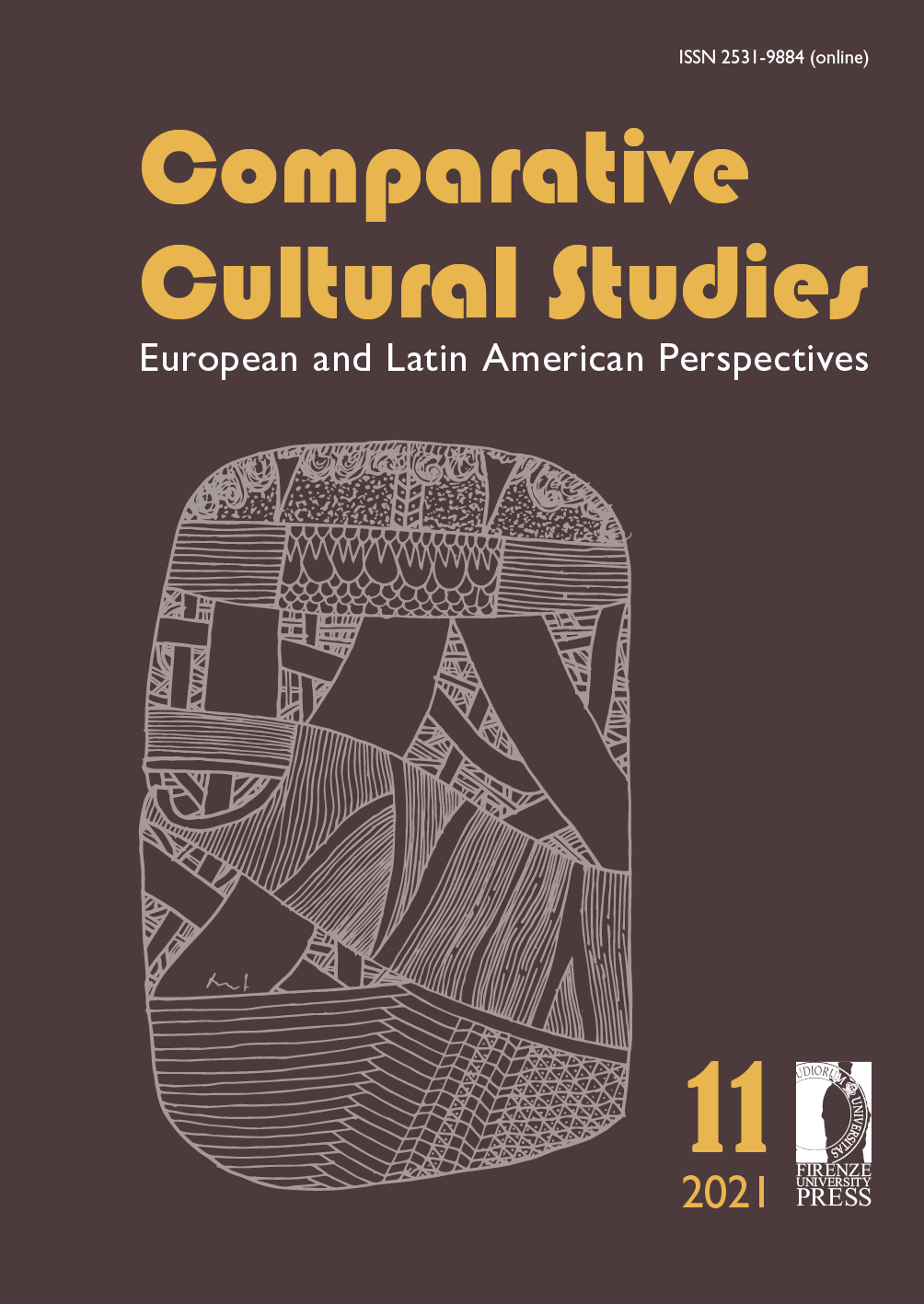Tránsito y Llegada de Refugiados Judíos y Sobrevivientes del Holocausto a México, 1939-1960
DOI:
https://doi.org/10.13128/ccselap-12516Keywords:
Holocaust, Jewish refuge, Mexico, migration, transitAbstract
During World War II, Mexico kept a selective and restrictive migratory politics towards the Jewish exile. Even though that politics was not singular in the region, it surprises that Mexico received only a group of 2,000 refugees. Despite this, Mexico became a permanent shelter for many refugees. The analysis focuses on the story of a survivor of the Holocaust -Bronislaw Zajbert- who was forced to move from his house in Lodz to be sent with his family to the ghetto of the city and emigrated first to Venezuela and later to Mexico. His experience swinging between the moving and the fixing contrasts the intensive mobility of those who managed to move in Europe to run away from Nazism. Their journey to Latin America emerges as a convergent experience while Mexico offered them in both cases the chance of finishing their displacement. It is an exploratory study that investigates how the individual experience of the transit impacted the construction of an affective and material home in Mexico.
Downloads
References
Avni Haim, The Role of Latin America in Immigration and Rescue during the nazi era (1933-1945): a Central Approach and Mexico as a Case Study, Washington D.C., Woodrow Wilson International Center for Scholars, 1986.
________, “Los países de América Latina y el Holocausto,” en Efraim Zadoff (ed.), Shoá: Enciclopedia del Holocausto, Jerusalem, Yad Vashem y E.D.Z. Nativ Ediciones, 2004.
Betts Alexander, Collier Paul, Refuge. Rethinking Refugee Policy in a Changing World, New York-UK, Oxford University Press, 2017.
Bokser Liwerant Judit, Cárdenas y los judíos: entre el exilio y la inmigración, en «Canadian Journal of Latin American and Caribbean Studies», vol. 20, nn. 39-40, 1995, pp. 13-38.
________, “México en los años treinta: cardenismo, inmigración judía y antisemitismo,” en Delia Salazar (ed.), Xenofobia y Xenofilia en la historia de México siglos XIX y XX: Homenaje a Moisés González Navarro, Ciudad de México, Instituto Nacional de Migración, Instituto Nacional de Antropología e Historia, DGE Ediciones, 2006, pp. 379-415.
Bothe Alina, Nesselrodt Markus, Survivor: Towards a Conceptual History, en «Leo Baeck Institute Yearbook», vol. 61, 2016, pp. 57-82.
Castañeda Ernesto, A Place to Call Home. Immigrant Exclusion and Urban Belonging in New York, Paris, and Barcelona, Stanford, Stanford University Press, 2018.
Gigliotti Simone, The Train Journey. Transit, Captivity, and Witnessing in the Holocaust, NewYork-Oxford, Berghahn Books, 2010.
Gleizer Daniela, Unwelcome Exiles: Mexico and the Jewish Refugees from Nazism, 1933-1945, Boston, Brill, 2014.
________, Dos exilios, una memoria y un olvido,en «Letras Libres. México: entre el asilo y el rechazo», n. 247, 2019, pp. 28-33.
Hayes Peter, Why? Explaining the Holocaust, New York-London, W.W. Norton & Com-pany, 2017.
Kaplan Marion, Hitler’s Jewish Refugees: Hope and Anxiety in Portugal, New Haven, Yale University Press, 2020.
________, Dominican Haven. The Jewish Refugee Settlement in Sosúa, 1940-1945, New York, Museum of Jewish Heritage, 2008.
Kushner Tony, Journeys from the abyss. The Holocaust and forced migration from the 1880s to the present,Liverpool (UK), Liverpool University Press, 2017.
Rubio Díaz Leal Laura, El Desplazamiento Interno Forzado en México: Respuestas del Esta-do y Litigio Estratégico, Ciudad de México, tirant lo blanch, 2019.
________, Desplazamiento Interno Inducido por la Violencia: una Experiencia Global, una Realidad Mexicana, Ciudad de México, ITAM-CMDPDH, 2014.
Schwebel Bruno, As Luck Would Have It. My Exile in France and Mexico. Recollections and Stories, Riverside (CA), Ariadne Press, 2004.
Silberstein Jacques, Bitácora, sin fecha, archivo personal.
Spitzer Leo, Hotel Bolivia. The Culture of Memory in a Refuge from Nazism, New York, Hill y Wang, 1998.
Von Zur Mühlen Patrick, “The 1930s: The End of the Latin American open-door policy” en Frank Caestecker, Bob Moore (eds), Refugees from Nazi Germany and the Liberal European States, New York-Oxford, Berghahn Books, 2011, pp. 103-108.
Wolfowtz Danielle, El Hombre Silencioso, México, sin editorial, 1999.
Zajbert Bronislaw, Memorias no publicadas (en proceso), Ciudad de México, 2020.
Testimonios (Visual History Archive, USC Shoah Foundation):
Cojuc Georges, 31 mayo 1996, Ciudad de México, código 15904.
Halamsky Jerzy, «The World Jewish Congress Collection», Serie H, 1919-1981, Mexico, Caja H242, Expediente 6.
Rubinstein Maurice, 12 junio 1998, San Diego (CA), código 43632.
Rubinstein David, 10 diciembre 1997, San Diego (CA), código 36064.
Tauber Rubinstein Rebeca, 10 diciembre 1997, San Diego (CA), código 36063.
Wolfowitz Danielle, 1 mayo 1996, Ciudad de México, código 13163.
Zajbert Bronislaw, 20 marzo 1996, Ciudad de México, código 12644.
Testimonios (colección historia oral, USHMM):
Zajbert Bronislaw, 5 abril 2017, Ciudad de México, <https://collections.ushmm.org/search/catalog/irn563198>.
Downloads
Published
How to Cite
Issue
Section
License
Copyright (c) 2021 Yael Siman

This work is licensed under a Creative Commons Attribution 4.0 International License.
This licence allows third parties to share (copy and redistribute the material in any medium or format) and adapt (remix, transform and create from the material for any purpose, including commercial purposes), provided that authorship and first publication in this journal (The Journal, DOI of the work) is acknowledged, a link to the licence is provided, and it is stated whether changes have been made to the work.







